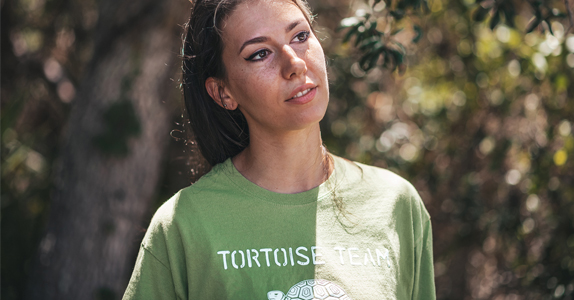
People & Business
Students Collaborate to Study, Preserve Tortoise Habitat
August 11, 2021 – Sarasota
Students from the University of South Florida and Ringling College of Art and Design found an unusual way to spend their summer break, supporting a gopher tortoise habitat on the USF Sarasota-Manatee campus.
The students – USF biology majors Ryan Sampson, Yaritza Vargas and Milena Nesic and Ringling photography major Tammy-Mariah Gill – joined adjunct instructor Edie Banner for 20 hours each week to photograph and study the six-acre site. The Cross College Alliancefunded the internship program through the Environmental Discovery Awards.
“This is the best way I could think of spending my summer,” Gill, a senior, said. “I like to photograph and study the biodiversity of the area, the insects, plant life and small animals. It’s interesting that all of this biodiversity lives in one small place here.”
Gopher tortoises are threatened in Florida. They prefer sandy upland areas, feeding on low-lying shrubs, leaves, flowers, cacti and grasses; the greenery supplies their water needs as well.
It turns out, the USF campus provides an ideal environment for tortoises, whose burrows can run 30 feet deep and house insects and other small animals. Footage from wildlife cameras has shown foxes, snakes, mice and other creatures living amidst and within the burrows.
“I love to learn, and I love being here to seeing all the different elements of this ecosystem and how they’re interconnected,” said Nesic, clad in a “Tortoise Team” T-shirt. “I like to see that balance.”
In addition to documenting the site, the students improved the ecosystem’s overall health by removing dead and nuisance plants so that foliage important to the tortoises’ diet can flourish.
Banner volunteers to monitor the area, which also serves as an outdoor laboratory for the students, who can earn credit for their field work or volunteer to monitor and maintain the site as a member of her Tortoise Team.
“We’ve seen hatchlings so we know the tortoises are breeding and their habitat is healthy,” Banner said.
The program was credited and ran eight weeks. The final class wrapped up on July 23.



You must be logged in to post a comment Login